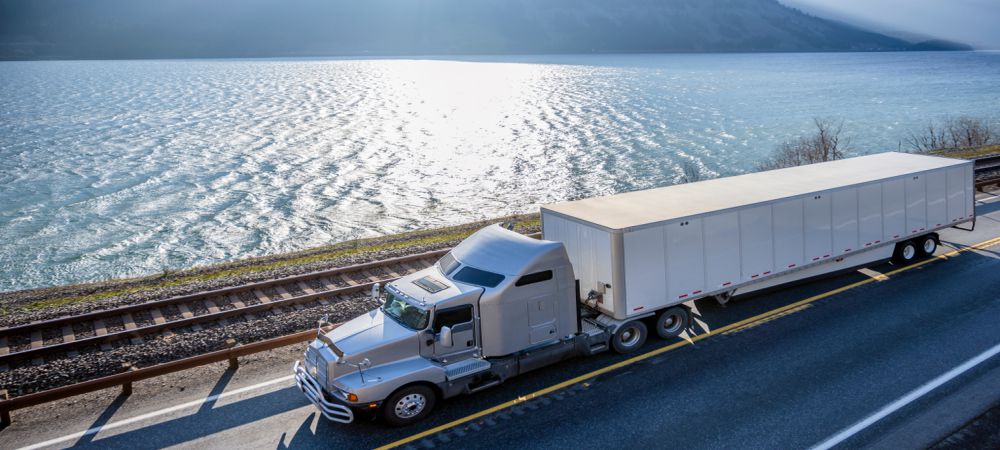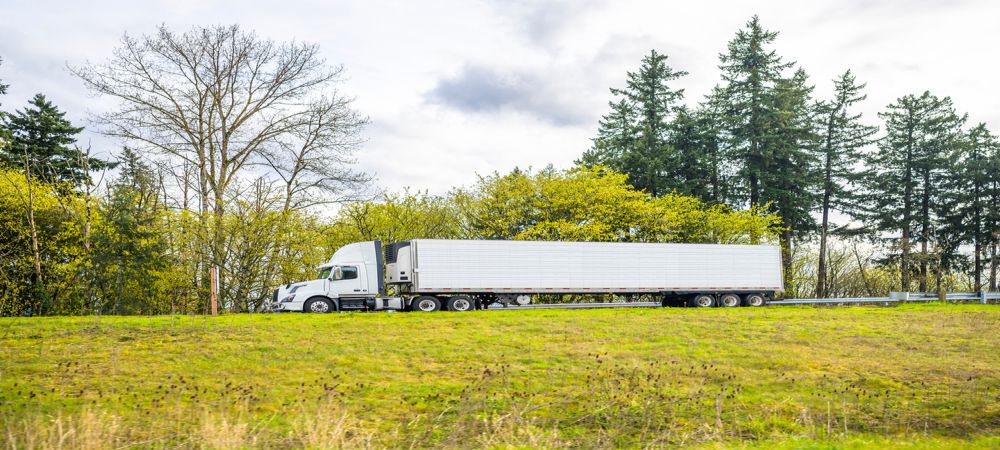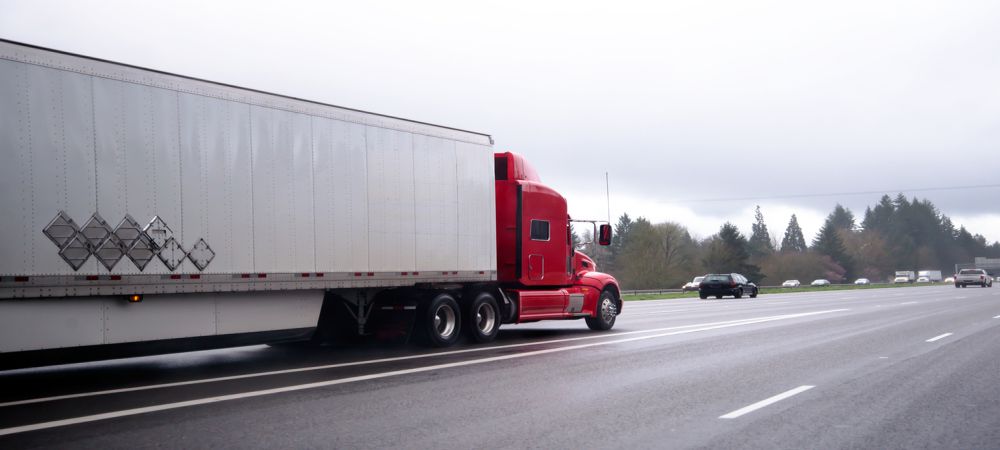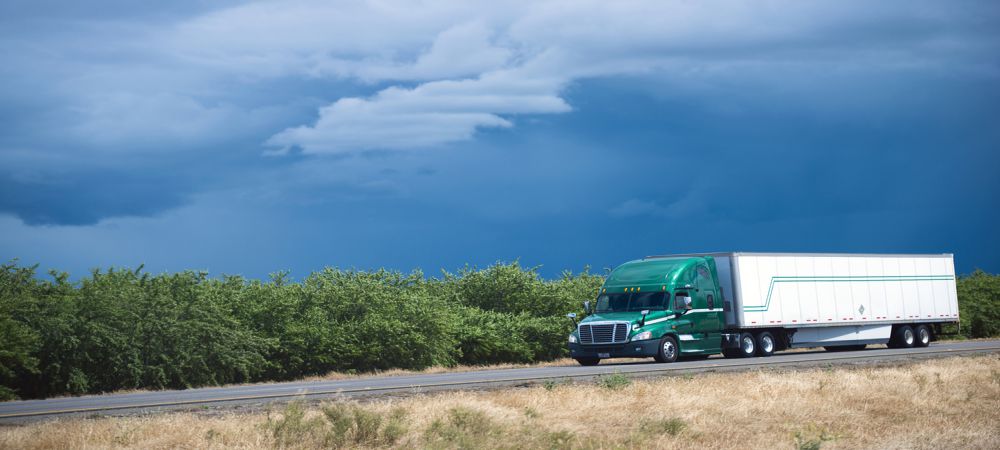There are a lot of trucking options available in Canada nowadays to transport any type of freight. Among all the trucks used in transporting freights, dry van trucks and reefer trucks are the most commonly used.
However, before deciding whether to get a dry van or reefer truck, you must consider several factors, including your shipping needs and requirements, to get the best option ideal for your business.
Choosing the right shipping truck is crucial for both the shippers and carriers to safely and securely deliver the freight to its destination. Each of these two comes with its specifications, features, advantages and disadvantages. For that reason, it is a must to make yourself familiar with these freight shipping options to choose the right method.
What is the Best Option Between Dry Van Trucks and Reefer Trucks?
Before you can successfully transport freight, you must first determine the shipping option that best suits your transportation needs. Among the wide variety of methods you can choose from, dry van trucks and reefer trucks are the most common types. Each transportation method comes with different features, advantages and disadvantages that impact both shippers and carriers who haul freights.
Dry Van
Generally, a dry van or a box trailer is a semi-trailer type that’s fully enclosed to protect freights from outside elements. They are the trailers that you see on the road every day connected to trucks.
They’re usually big, rectangular containers and are designed to carry boxed, palletized, loose freight or any other type of equipment. Unlike refrigerated reefer units, they are not temperature-controlled, and they can’t take bulky and oversized shipments.
Dry vans offer several advantages and can be used for a variety of less-than-truckload (LTL) or full truckload shipment. Most shipped products that you are receiving are most likely travelled on a dry van.
Dry van shipping
 Dry van shipping is considered the most common type of freight transportation method. It uses a vehicle or compartment in hauling shipments, particularly those in pallets or boxes of cargo. There is no temperature control or other climate alterations feature within the dry van, which means if your freight needs to be refrigerated, between dry van truck and reefer truck, the latter part is the right option for you.
Dry van shipping is considered the most common type of freight transportation method. It uses a vehicle or compartment in hauling shipments, particularly those in pallets or boxes of cargo. There is no temperature control or other climate alterations feature within the dry van, which means if your freight needs to be refrigerated, between dry van truck and reefer truck, the latter part is the right option for you.
Nevertheless, items like consumer goods such as clothing, machinery, electronics, packaged foods, etc. are ideal for this truck because it allows a large amount of freight to be shipped at once in an organized and convenient way.
No matter what type of products you’re shipping, as long as they aren’t required to keep in a cold or warm place, dry van shipping can work for your transport needs.
This shipping method is often chosen for its convenience, large size and versatility. Aside from that, these trailers also protect cargo from theft, potential damage, and bad weather.
Most shippers use them for both full-truckload and LTL shipments. With full truckloads, you can schedule custom pick-up and delivery specifications, while choosing LTL shipments can benefit you from lower pricing thanks to freight consolidation.
Why Industries Use Dry Van Shipping?
Many industries use dry van trucking for several reasons. Although it is standard-van-sized, it is an extremely versatile logistics service across a wide range of industries.
You can ship many products via dry vans such as clothing, cleaning products, electronics, automotive equipment, and many more. It is also perfect for any packaged freight that does not need refrigeration or other temperature-control goods.
Another reason dry van shipping is so frequently chosen between dry van trucks and reefer trucks is that it’s effortless to find shipping companies that offer this method.
The main reason why many shipping companies and 3PL (third-party logistics) providers focus on this shipping because it’s a profitable service to offer. For that reason, you won’t have much difficulty looking for a carrier that can handle your shipment.
When it comes to employment opportunities, jobs with dry van trucking companies provide the most range for workers because they run locally, regionally and nationally. It makes it easier for employees to do their jobs to meet their customers’ needs.
Advantages of dry van shipping:
- Dry van trailers are incredibly versatile and convenient. A wide variety of items can be shipped through this method, including non-perishable food, building and construction materials, and more.
- With these trailers, you can worry less about the security of your cargo as it’s excellent at protecting your items from bad weather, theft and other outside elements. While some shippers prefer to use load bars with additional bracing and blocking, not all dry vans require straps, chains, or other covers while transporting.
- Another dry van advantage is the “drop and hook” load feature of a dry van that drops an empty trailer and hooks up a loaded one can save you additional time and effort when loading and unloading. With that, you can focus more on processing needs.
- This shipping method is also one of the most affordable means of transportation that can accommodate both regional short-haul shipments along long-haul shipments.
Drawbacks
- Most of its hardwood floors are vulnerable to moisture and condensation buildup that can come from cargo or through open doors. It can lead to extra repair or replacement costs if the trailer takes on the freight’s damage.
Related article: Dry Van Freight Shipping: Important Facts You Should Know
Reefer Truck
 Generally, “Reefer” is the slang term for refrigerated. However, the reefer only refers to the trailer itself, while a “reefer truck” refers to a semi-cab pulling a refrigerated trailer designed to haul perishable goods.
Generally, “Reefer” is the slang term for refrigerated. However, the reefer only refers to the trailer itself, while a “reefer truck” refers to a semi-cab pulling a refrigerated trailer designed to haul perishable goods.
They are usually 1 ton or larger with a refrigerated unit built feature either built directly on the frame or is transported by trailer. It’s refrigerated using diesel-powered generators and liquid carbon dioxide, or CO2. These trucks are ranging from simple ice cream trucks to large refrigerated containers carrying perishable goods across Canada.
These trailers differ from cooling vans, which are only insulated and vented. What makes dry van truck and reefer truck is the latter includes an active cooling system. So, you can ship frozen as well as refrigerated goods. A reefer could also be temperature adjusted to transport heated goods. However, this is much less common.
Refrigerated Shipping
A reefer freight shipping option operates on a closed and temperature-controlled system. Typically, removing heat and maintaining a steady cold temperature is what a refrigerated truck system is all about.
These trucks function by collecting and pumping heat throughout the temperature-controlling system. Refrigerated shipping is a great option for anyone who needs to transport temperature-controlled goods and items safely.
Components of Reefer Units
Between dry van trucks and reefer trucks, reefer comprises different components while the first one does not. These are the following:
Compressor
A reefer unit has a small engine inside that drives the compressor. This compressor draws in a gaseous refrigerant and compresses it. The compressor’s pressure liquefies the gas, giving off heat to the compressor’s body and the air itself. From here, the temperature is controlled to fairly warm, and the refrigerant goes through to the condenser.
Condenser
The condenser is the receiver of the liquid coming from the compressor. Once the liquid enters the condenser, the heat exchange process begins. Then, the liquid’s warmth will flow to the tubing walls, then outside to the attached fins. The fins will provide more surface area, which cools the outside air through the condenser fan. The cooling process is quite similar to how a radiator cools an engine.
Evaporator
Generally, the evaporator is inside the reefer trailer. At this point, the refrigerant is already given up most of its heat to the condenser, and it became a cool liquid. Then it will go into the evaporator through a metering valve, which controls the amount of cooling.
Inside the evaporator, the cool liquid refrigerant will expand, turning back into a gas. Then, it will absorb a great deal of heat from the surrounding finned coils during the process. The air from the trailer will be blown over the evaporator. The air will go back into the compressor, and the cycle begins all over again.
 Advantages
Advantages
- One of the excellent reefer truck advantages is its supply and demand are always high since there is always a high demand for fresh products. Therefore, refrigerated shipping will continuously be used to ship these goods and items.
- Reefer trailers are also great for protecting any sort of freight from spoilage, weather conditions, theft, and possible damage.
- Another reefer truck advantage is that although it has a cooling system, they are not only limited to refrigerated goods and items. Dry goods and other temperature-sensitive items can also be shipped with it.
Drawbacks
- After every load and controlling the thermometer and cooling equipment, regular cleaning of the trailer is too tiiring to do. Typically, it is only some of the additional responsibilities that the driver must fulfil.
- Due to the high-power motor running from the temperature-controlling system, it can be noisy.
- Longer waiting time on shipping docks for loading and unloading is expected in reefer trucks.
- If a breakdown happens in the middle of transporting, it can lead to unavoidable spoilage or damage to the freight.
Which is the Best Shipping Mode For Your Business?
Between dry van truck and reefer truck, you must choose the one that will meet all your shipping requirements. These two freight shipping options offer different services and functions, so when deciding what to choose between the two, consider your freights needs, including the shipping requirements.
Then, learn the features, functions, advantages and disadvantages of the two shipping methods to get the best ideal shipping mode for your business. If you still have some questions in mind, you may visit Roadlinx. You may also call us at 905-760-1141 or email us at ian@seoonlineclass.com for more inquiries.



